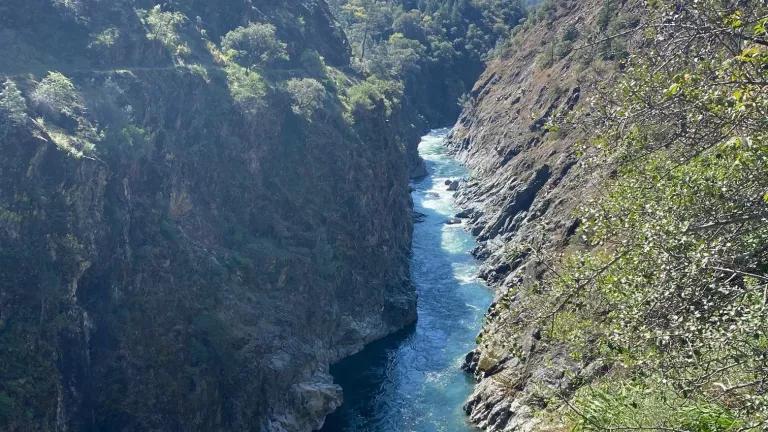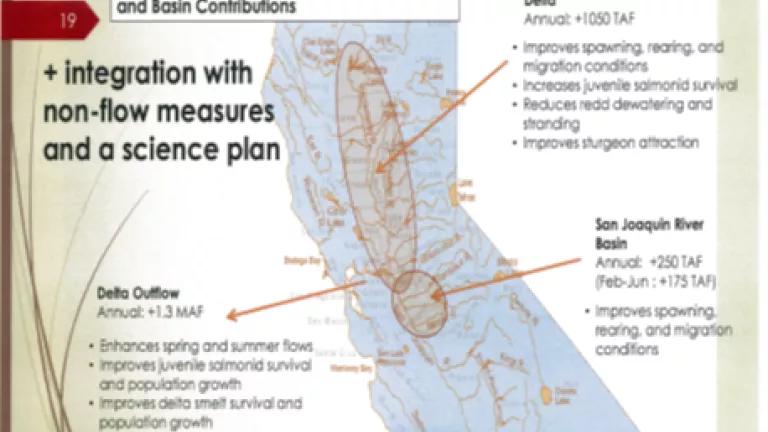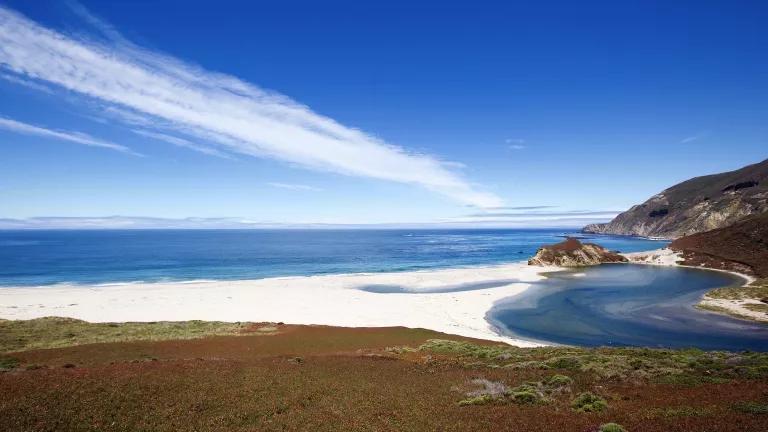Saving California's Salmon Is Now Up to Governor Newsom
Keeping the Trump administration's biological opinions in place would likely drive California’s wild salmon—as well as their habitat in the San Francisco Bay-Delta estuary and all who depend on them—into a death spiral from which they may never recover.

The federal court has spoken on the matter of keeping the highly destructive Trump biological opinions in place this year and the verdict is that doing so would likely drive California’s wild salmon, their habitat in the San Francisco Bay-Delta estuary, and all who depend on them, into a death spiral from which they may never recover. It’s time for the Biden Administration to acknowledge that these biological opinions are highly illegal and wildly destructive, and to impose adequate protections during the three years that it will take to write new biological opinions. In the meantime, it will be up to the State of California to step up and prevent California's salmon and other native fish from disappearing off the face of the earth.
The federal court in Fresno clearly recognized the critical condition of these threatened and endangered species—species that once defined the San Francisco Bay-Delta estuary with their abundance. The Court found that "given that winter-run [salmon] live for only three years and had poor survival in 2020 and 2021, it is critical to avoid a third year of poor survival, else 'the species would likely suffer irrecoverable decline toward extinction.'" The Court similarly found that "[t]here is considerable concern that Delta Smelt face imminent extinction in the wild," that "[Central Valley] steelhead populations are very low" and that "spring-run [salmon] experienced 'catastrophically low' survival in 2021." Because of the dire status of the species, in combination with the harmful water project operations allowed by the Trump BiOps, the Court adopted the Interim Operations Plan (IOP) for this year proposed by the federal and state governments as a layer of increased protections on top of the BiOps. While NRDC and its co-plaintiffs (known as "PCFFA") had sought stronger protections that those proposed in the IOP, the Court deferred to the state and federal agencies to do their job and protect listed species. We must now hold them to it.
The Problem
A lot of death and destruction can happen in three years—the time estimated to complete new biological opinions. Since the Trump biological opinions were adopted in 2019, we have seen devastating mortality of endangered winter run chinook salmon, with more than 97% of 2021’s brood year and about 89% of 2020’s brood year dying in the short stretch of the Sacramento River between Keswick Dam and the Red Bluff Diversion Dam—about 35 miles as the crow flies. Thirty-five miles should be a stroll in the park for a fish that migrates hundreds of miles from where it is born out to the ocean, and hundreds of miles back up to its natal stream to spawn a couple years later. But because the Bureau of Reclamation—enabled by the Trump biological opinions—drains Shasta Dam to deliver the maximum amount of water to its contractors, there is not enough cold water left to maintain ideal temperatures for salmon eggs so they fry below the Dam alive.
And now, in 2022, this species that typically lives only three years faces another catastrophic die off in its only remaining spawning habitat below Shasta Dam, due to very low levels of water storage in Shasta and continuing mismanagement by the U.S. Bureau of Reclamation.
What Needs to Happen
This problem is avoidable. It requires the Bureau of Reclamation to reduce deliveries to the largest single set of contractors in the Central Valley Project – the Sacramento River Settlement Contractors – who divert more than 1.5 million acre-feet from the Sacramento River, even in drought years, primarily to grow rice and almonds. Reclamation releases water from Shasta Dam to feed these insatiable growers, and, in doing so, drains Shasta of the water needed for salmon. Both the State Water Resources Control Board and Reclamation have the authority to reduce these deliveries and provide enough cold water for salmon. But both entities have failed to do so year after year of devastating losses of winter run chinook to temperature-dependent mortality.
While the Court adopted stronger temperature requirements than the Trump BiOps, the Court declined to order Reclamation to limit deliveries to the Sacramento River Settlement Contractors, although it acknowledged the threat they pose, noting that "the senior contracts are the '800-pound gorilla' in the room" and that "[i]t is becoming increasingly obvious ... that the BiOps governing the CVP and the SWP will eventually be forced to confront, or at the very least fully appraise, the 800-pound gorilla. At least one of the wildlife agencies involved in this lawsuit (FWS) has expressed concern that the SRS Contracts in particular may not allow Reclamation to make operational adjustments necessary to protect smelt and that 'if increased outflows are needed and cannot be met under the SRS contracts, those contracts may need to be revisited to ensure consistency with the Act.' The record developed through the past and present motions for injunctive relief in these cases strongly suggests that NMFS will face a similar conundrum when revising the 2019 NMFS BiOp."
But in the three years that it will take to revise the Trump BiOps and allow them to grapple with the Settlement Contracts in a meaningful way, the winter run chinook may be gone. That's why the State Water Resources Control Board must act NOW to curtail deliveries under these unlawful and inequitable contracts, before time runs out.
The Consequences of Inaction
Since the Trump BiOps were adopted in 2019, we’ve also seen tens of thousands of threatened spring run chinook killed off by high water temperatures, increasing the urgency to protect the few remaining spring run from the adverse impacts of water project operations. Spring run chinook were exposed to abnormally high and harmful water temperatures in several rivers this past year, including the Sacramento. In Butte Creek, home of the Central Valley’s largest remaining spring-run chinook salmon population, high river temperatures in the summer of 2021 squeezed fish into just a few miles of accessible habitat and ultimately led to outbreaks of disease and parasites that killed most of the adult spring-run on this creek prior to spawning. California Department of Fish and Wildlife (CDFW) has estimated that 14,800 adult spring-run died, leaving only approximately 1,200 adults capable of reproducing.
Similarly, since the Trump BiOps were adopted in 2019, Delta Smelt have largely disappeared in the wild. Fish and wildlife agencies have now started releasing hatchery Delta Smelt in the wild in a last ditch effort to save this species that was among the most abundant in the Delta a mere 50 years ago, and that has long been considered a bellwether for the health of the Delta.
What’s Next
We’re long past the point in California of tweaking around the edges of our woefully outdated and racist water rights system and the wildly overallocated Central Valley Project and State Water Project. It is time for real reform. The Endangered Species Act reinitiation process now underway and implementation of the IOP this year open the door for state and federal water managers to do the right thing by California’s public trust resources and stop driving our rivers, salmon, and other native species into oblivion. We will not relent until the Newson and Biden Administrations step up to meet the challenge.



